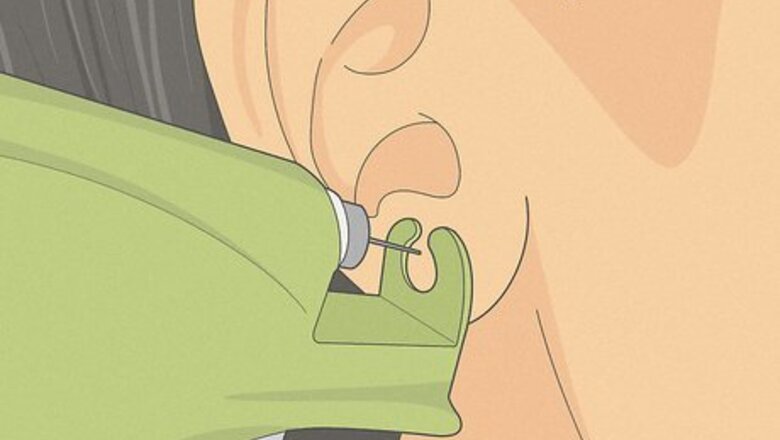
views
- Decide on a maximum size beforehand so you know when to stop. It's easy to accidentally keep widening your piercing beyond what you want.
- Use a piercing lubricant to oil a piercing taper that matches the gauge of your piercing. Insert the taper while taking a hot shower to loosen your skin.
- Keep the taper in for at least 6 weeks before removing it and repeating the process with a taper 1 size larger.

Get an ear piercing. If you don't have it already, get your earlobes pierced. Gun piercings aren't that great, especially if you get them done by an unprofessional at the mall. Go to a piercer and get your lobes pierced with a needle. You should wait at least five months before beginning a stretch, to let your ear fully heal. Getting a piercing at a professional body piercer with a needle is the safest way, and they can pierce your ear at a bigger size than if you got it done with a gun.
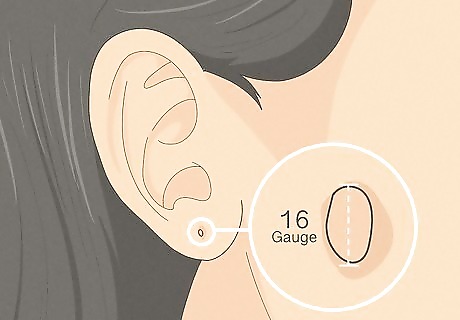
Find out what size your earlobe piercings are. Most standard piercings start at 16g or 14g, but can be done bigger by request. Years of wearing long, dangly earrings and tugging on your piercings may make your piercings bigger! Professional body piercers can measure your ears to see what size they are.

Decide on a stopping point. From personal experience, it's hard to decide on a stopping point. Stretching is addicting, and you may decide on a larger size later on. But for now, get a rough idea of where you want to stop. This way, you can go to the store and buy just what you need. In order, these are the sizes for stretched piercings. The smallest is a 20 gauge, and they increase in size as the chart continues. 20 gauge- .8mm 18 gauge- 1mm 16 gauge- 1.2mm 14 gauge- 1.6 mm 12 gauge- 2mm 10 gauge- 2.5mm 8 gauge- 3.2mm 6 gauge- 4mm 4 gauge- 5mm 2 gauge- 6mm 1 gauge - 7mm 0 gauge- 8mm 9mm 00 gauge- 10mm ⁄16 inch (1.1 cm)- 11mm ½ inch- 12.7mm ⁄16 inch (1.4 cm)- 14mm ⁄8 inch (1.6 cm)- 16mm ⁄16 inch (1.7 cm)- 18mm ¾ inch- 19mm ⁄8 inch (2.2 cm)- 22mm ⁄16 inch (2.4 cm)- 24mm 1 inch (2.5 cm)- 25mm 1 and 1/16 inch- 28mm 1 and 1/8 inch- 30mm 1 and ¼ inch- 32mm 1 and 3/8 inch- 35mm 1 and ½ inch- 38mm 1 and 5/8 inch- 41mm 1 and ¾ inch- 44mm 1 and 7/8 inch- 47mm 2 inch (5.1 cm)- 50mm Sizes can get bigger after 2 inches (5.1 cm), but it is most commonly the biggest size.
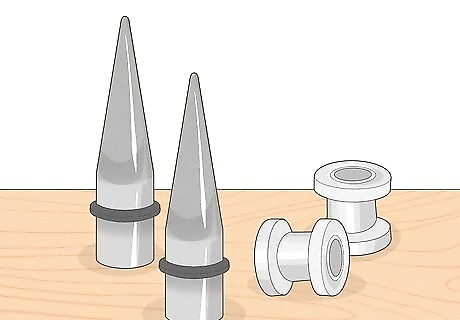
Buy tapers and earrings. A taper is a long stick used to stretch your ear from a small size to a bigger one, but for the first few stretches (before a 10 or 8 gauge, depending on your elasticity), you might be able just to put in the earring. Tapers are not jewelry, however, and should only be used as tools to stretch to the next size, and follow up with your tunnel/plug. There are other methods of stretching such as "dead stretching" and "taping". Dead stretching involves just waiting until your piercing naturally is loose enough to move to the next size without using a taper. Taping is where PTFE tape is wrapped around your current earrings then oiled and put back in the ear, a few wraps of tape every 3-4 days will move the piercing up to the next size fairly rapidly. When you first stretch a piercing, hoops and horseshoe earrings are much easier to wear than plugs because they allow for movement and swelling. Treat a stretched piercing as a new piercing. Lubricants also make a stretch easier. While you're out getting a new taper, get some Jojoba Oil, Emu Oil, Vitamin E or another lube. Neosporin and Vaseline are not good lubes. If you read the back, it says not to use on a cut or open wound (like freshly stretched ears).
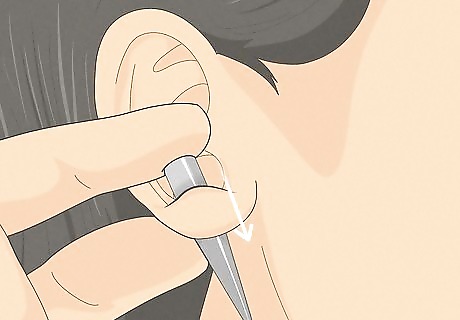
Stretch your ears. Find a time when you have the bathroom to yourself and push the taper in. When it finally gets in, let your ear rest and put the earring in. Don't forget to lube the taper and both sides of your ear. Some people say a hot shower beforehand helps to make your ear a bit stretchy and massage it to get the blood flowing. When stretching, one stretch should start by pushing the taper in from the front, then the next stretch you should push the taper in from the back, then front, then back, and so on. This helps to keep scar tissue from forming and keeps stretching easier.
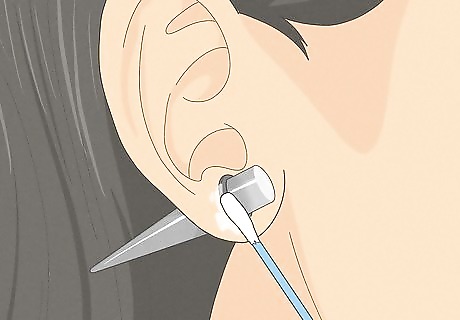
Keep it clean! Do sea salt soaks (1/8 teaspoon of sea salt dissolved into a cup of warm water) twice daily for the first week or so. Use ear care solution from the piercer for cleaning away crusties, or little bits of sand-like tissue that comes out of your ears. This is when it's easier to use a hoop earring.

Prepare for the next stretch. Here is a chart to determine how long you should wait in between stretches: 16g to 14g - 1 month 14g to 12g - 1 month 12g to 10g - 1.5 months 10g to 8g - 2 months 8g to 6g - 3 months 6g to 4g - 3 month 4g to 2g - 3 months 2g to 0g - 4 months 0g to 00g - 4 months
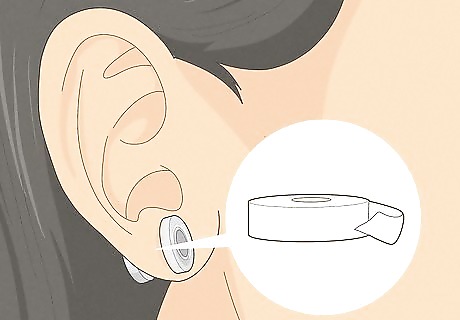
Using Teflon tape and packing it onto your earrings can make it bigger between stretches and makes stretching easier, but is more likely to harbor bacteria that can cause infection.
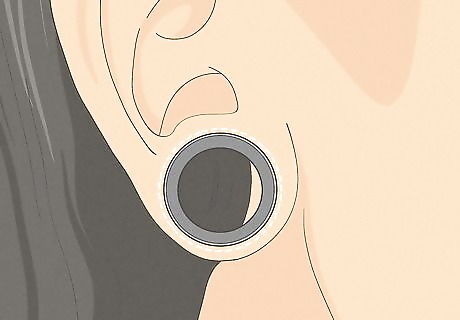
Know when to stop. If you stretch improperly and get a blowout or thin lobes, downsize and do daily oil massages to thicken lobes. With blowouts, downsize and put a single flared plug in from the opposite side to "roll" it back in.












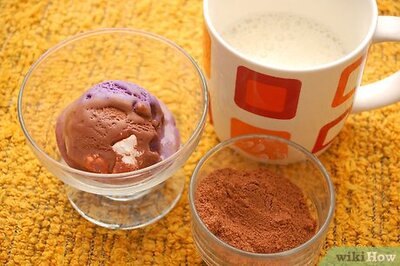




Comments
0 comment